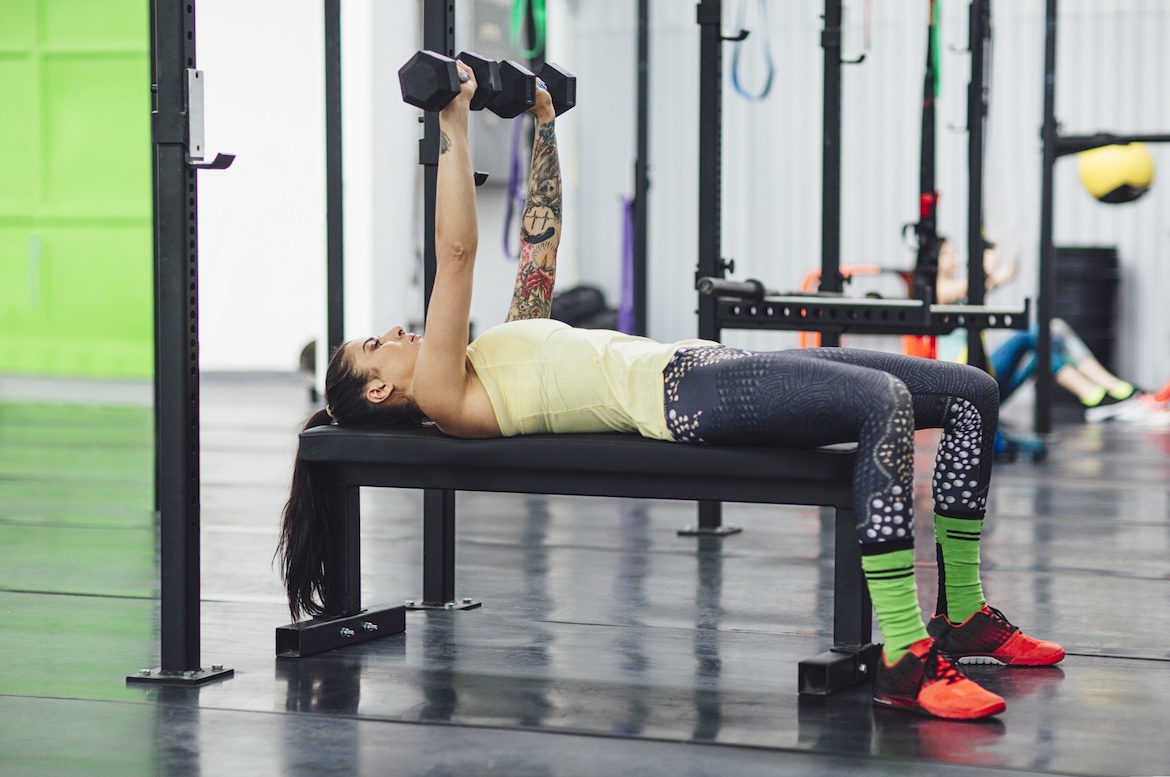How to Nail Wall Sits in 4 Easy Steps for a Stronger Lower Body and Core
Sink into it.

With all the stairs, hills, chairs, and walls around, the world can be your gym. One of the simplest ways you can put this “fitness equipment” to use is through a move you probably remember from P.E. class: a wall sit.
“While [wall sits are] a strength move, wall sits are so much more than that,” says Kelsey Wells, NASM-certified trainer and the creator of the PWR programs on the SWEAT app. Along with their lower-body strengthening power, they can promote physical and mental endurance, deliver “a mild cardio boost,” and are ripe for personalized variations, whether you want to work up to a full wall sit or make the move more challenging.
Wondering how to get the most of this versatile exercise? You’ve got plenty of options. But first, you’ll want to make sure you’ve got the basics down.
How to do a wall sit with perfect form every time
Pretending you’re sitting in a chair, without a chair actually supporting you, is easier than it may seem. Here’s how to do it:
- Find a wall and rest your back flat against it with your feet slightly out in front of the wall. Make sure your feet are about shoulder-width apart.
- Bend your knees and slide down the wall so your thighs are perpendicular to the wall and your knees form a 90-degree angle. You may need to adjust your feet distance from the wall to make that 90-degree angle at your hips and knees, but only slide down the wall as far as you can comfortably go.
- Engage your muscles, including your quads, glutes, and hamstrings. Also make sure to keep your core tight and arms at your sides.
- Hold for time, then push through your heels to stand back up.
How long should you hold a wall sit?
The answer to this question is personal. In order to get the benefits of a wall sit, it needs to challenge you. And that point might come at different times for different people.
“For beginners, 20 to 30 seconds is a great starting point,” Wells says. “Intermediate to advanced athletes might aim for 45 to 90 seconds or more. The key is quality over time—maintain proper form the whole way through, and don’t push past the point where you start to lose alignment.”
“Wall sits mimic the mechanics of sitting and standing, making them great for building strength to support those movements efficiently and pain-free.” —Kelsey Wells, CPT
Wall sit form tips to keep in mind
Avoid stressing your joints or undermining your effort by following these tips.
1. Keep your hands by your sides
We all know the gym class shortcut of putting in some additional support for yourself with the addition of your arms. “Don’t let your hands wander to your knees to make the exercise easier,” certified personal trainer Bojana Galic, CPT, says.
2. Keep your knees pointing straight ahead
Don’t let them collapse inward, which could put pressure on your joints.
3. Lock in that 90-degree knee bend
Make sure your ankles are positioned directly under your knees, not too far from or close to the wall. “If your feet aren’t far enough from the wall, you’ll stress your knees,” Wells says.
4. Keep your back glued to the wall
Try your best to avoid leaning forward. “Your back should stay flat against the wall the whole time, which ensures proper alignment and prevents injury,” Wells says.
5. Find a goldilocks parallel
You want your thighs to be parallel to the floor, so try not to hold the position too low or too high.
Wall sit benefits that’ll make you want to add the move to your workouts
Why should you go to all the effort to sit in an invisible chair? It’s well worth it.
1. They work a lot of muscles at once
Wondering which muscles wall sits work? It’s basically two-thirds of your whole body, including your lower body and trunk. “Wall sits primarily target your quadriceps, but they also engage your hamstrings, glutes, calves, and core,” Wells says.
2. They build functional strength
Wall sits are an isometric move, which means you’re holding a muscle under tension without changing its length. This kind of strength training can particularly benefit stability and endurance, “which translates directly into functional movements like walking up stairs, maintaining good posture, and carrying heavy groceries,” Wells says. “If you think about it, wall sits mimic the mechanics of sitting and standing, making them great for building strength to support those movements efficiently and pain-free.”
They also promote muscular endurance, another important concept for functional fitness, such as in times when you may need to stand or hold something for a longer period of time.
3. They can encourage proper posture
Because you’re using your core to keep that back flat against the wall, it can help reenforce that nice stacked spine in your everyday life.
“Wall sits encourage good posture and core engagement,” Wells says. “The more you practice them, the more you’ll notice improvements in the way you carry yourself in daily life.”
4. They’re accessible and versatile
All you need to do wall sits is a wall, and you can also modify them based on your strength. If you’re new to quad work, start with a smaller bend in your knees than a 90-degree angle, and slowly work your way down to parallel as you build strength. If you want to increase the challenge, try putting a weight plate on your lap.
5. They’re a meditative mental challenge
Because the only thing forcing you to make it through the struggle to your time goal is your own mental will, wall sits can help you work out your body and your mind. “They’re amazing for mental endurance,” Wells says. “Your muscles burn, and the seconds feel endless, but learning to stay with that discomfort builds mental resilience.”
You can even look at them as a way to practice mindfulness and connect with your breath. “I like to think of it as a mind-muscle connection exercise, where you tune into your breath, notice how your body feels, and stay focused on every sensation,” Wells says. “As your legs start to burn, instead of resisting the discomfort, you learn to breathe through it, stay grounded, and trust in your strength. It’s a reminder that even when things get tough—whether in workouts or in life—you can stay calm, centered, and in control.”
How to work wall sits into your routine
Because wall sits are truly a move you can do anywhere at any time, it’s difficult to go about it wrong. Have a spare minute? Give yourself a micro-challenge for 60 seconds. You can also add them to any lower-body workout you have scheduled.
Wells suggests adding them to your warmup to activate your lower body, using them as a finisher at the end of your workout for an extra burn, combining them with other movements—like holding dumbbells in a wall sit while doing biceps curls or lateral raises to train multiple muscles at once.
What's Your Reaction?








![Getting Your Scope of Work Right — the Complete Guide [+ Templates & Examples]](https://www.hubspot.com/hubfs/image1-Nov-15-2024-08-13-06-4149-PM.png)
![Need to Write a Job Offer Letter? I’ve Got You Covered [+ Free Template & Examples]](https://knowledge.hubspot.com/hubfs/Offer-letter-1-20241115-4557732.webp)
![What Is a Risk Assessment? My Complete Guide [+ Free Template]](https://www.hubspot.com/hubfs/image5-Nov-15-2024-05-33-59-7062-PM.png)










































































